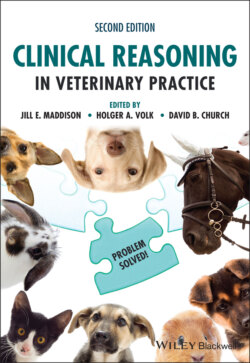Читать книгу Clinical Reasoning in Veterinary Practice - Группа авторов - Страница 56
Why is it important to differentiate vomiting from regurgitation, reflux and coughing?
ОглавлениеThe differential diagnoses, appropriate diagnostic tools and management strategies are completely different for patients who are truly vomiting compared with patients who are regurgitating, gagging or coughing. There is much in common in the treatment of vomiting and reflux because diseases that lead to vomiting may subsequently lead to reflux. It is important to appreciate this so that a gastric antacid can be prescribed to reduce the risk of reflux oesophagitis, which can be the reason a patient with an acute vomiting disorder does not recover as expected and which can contribute significantly to patient morbidity and mortality.
Patients who are vomiting (due to primary GI or secondary GI disease) may be treated symptomatically or investigated, depending on the case, using a variety of diagnostic tools, including clinical pathology, diagnostic imaging, endoscopy and exploratory laparotomy.
When regurgitation is the predominant clinical sign, it will usually be due to oesophageal disease (very occasionally pharyngeal) and usually carries a poor or guarded prognosis due to the type of lesion – for example, foreign body, stricture or megaoesophagus. The patient should not be treated symptomatically without diagnostic investigation to define the lesion where possible. In addition, the investigation of regurgitation essentially involves visualising the oesophagus (by endoscopy and/or diagnostic imaging tools) – it is rare for routine clinical pathology to be of diagnostic value in defining the type of lesion (megaoesophagus, foreign body etc.), although it may be of value once megaoesophagus is diagnosed in assessing possible metabolic causes.
Similarly, the patient who is gagging most likely has a lesion in the pharyngeal region or upper oesophagus, and visualising the lesion is the appropriate diagnostic path. Clearly, the animal that is coughing has respiratory or cardiac disease and requires an entirely different diagnostic approach.
Failure to define the problem appropriately can therefore potentially endanger the patient and may lead to wasted time and money and impair the veterinarian–client relationship and trust.
